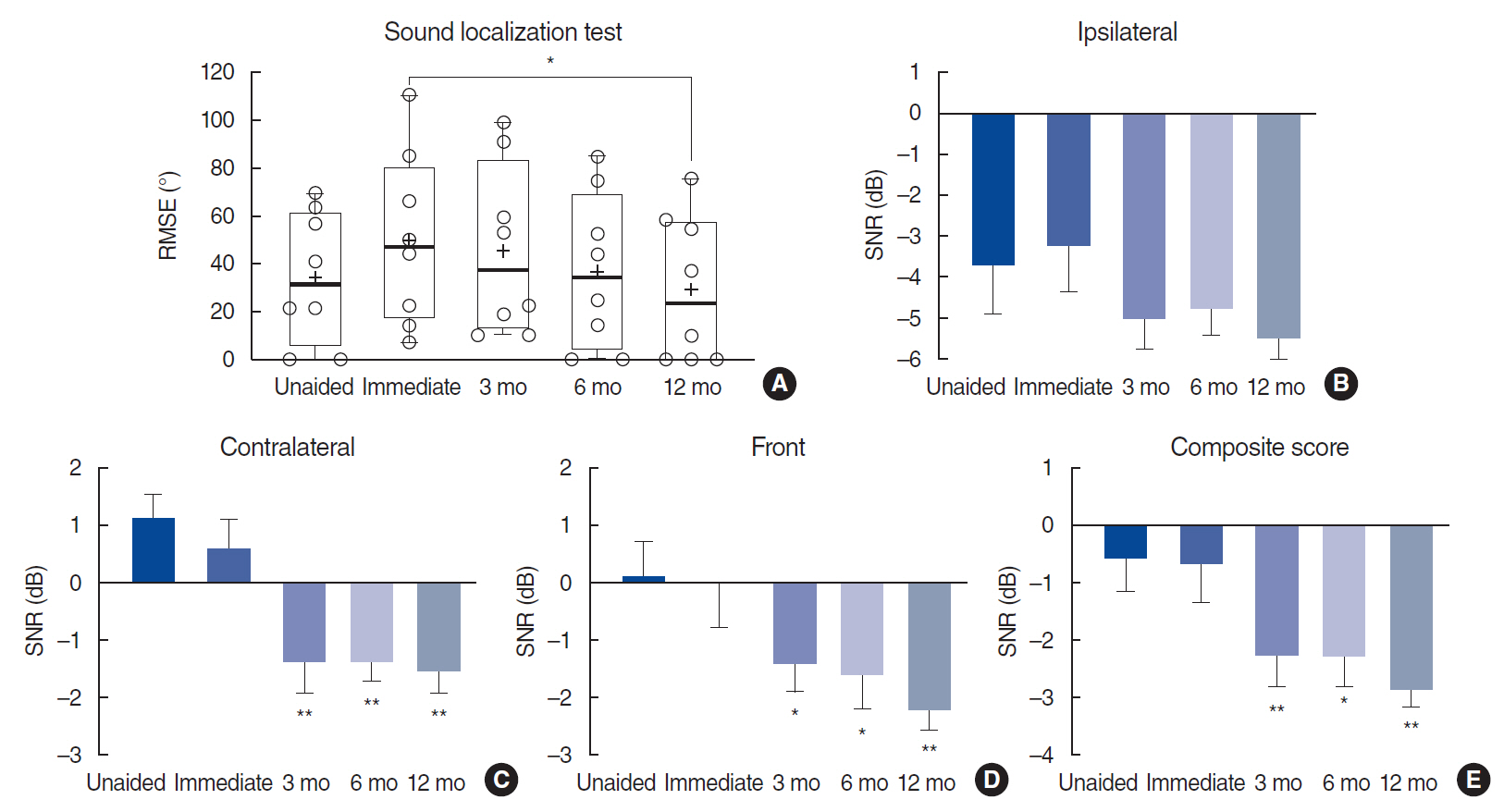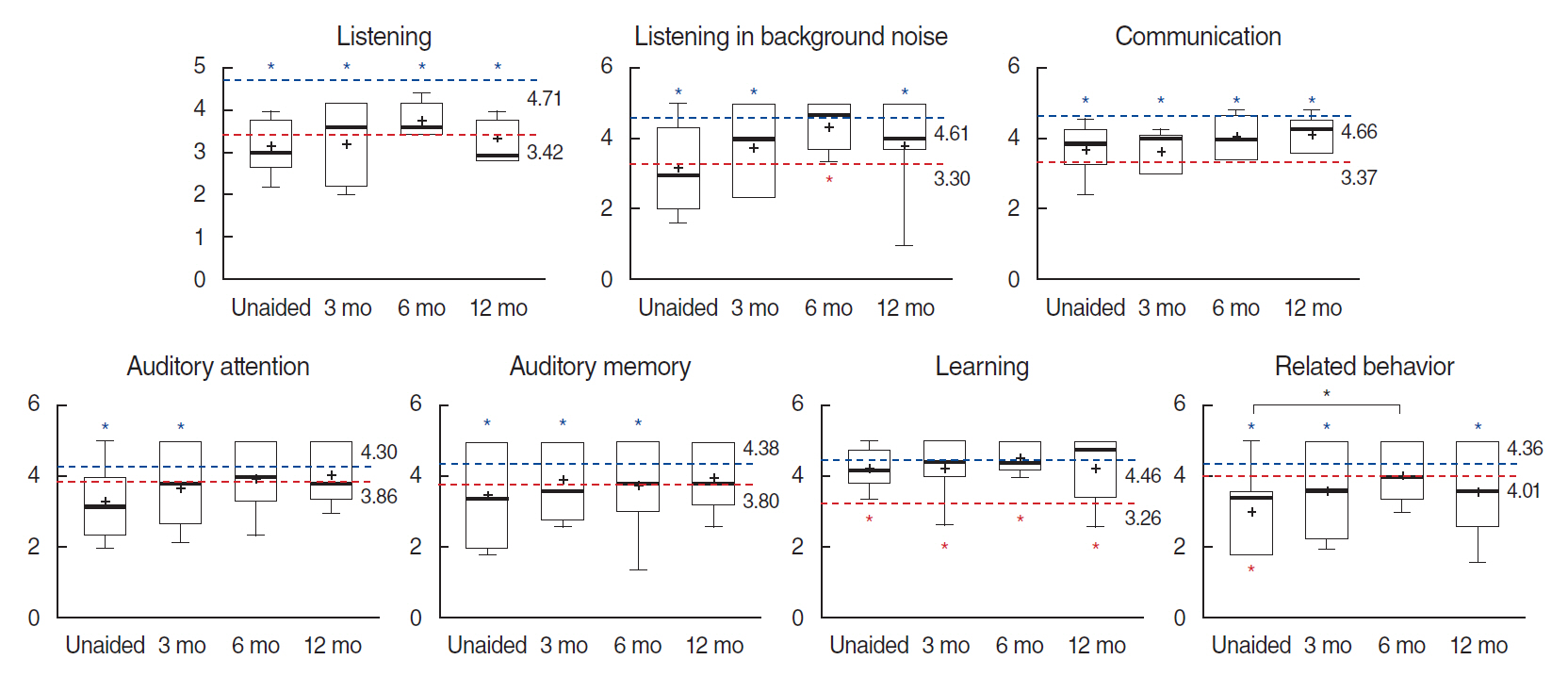Clin Exp Otorhinolaryngol.
2021 Aug;14(3):355-358. 10.21053/ceo.2020.02523.
Effects of Contralateral Routing of Signal Hearing Aids on Audiological and Academic Performance in School-Age Children With Unilateral Hearing Loss
- Affiliations
-
- 1Department of Otorhinolaryngology, St. Vincent’s Hospital, College of Medicine, The Catholic University of Korea, Seoul, Korea
- 2Research Center of GN Hearing Korea, Seoul, Korea
- 3Department of Otorhinolaryngology, Yonsei University College of Medicine and Brain Korea 21 PLUS Project for Medical Sciences, Seoul, Korea
- KMID: 2519191
- DOI: http://doi.org/10.21053/ceo.2020.02523
Figure
Cited by 1 articles
-
Hearables as a Gateway to Hearing Health Care
Hye Yoon Seol, Il Joon Moon
Clin Exp Otorhinolaryngol. 2022;15(2):127-134. doi: 10.21053/ceo.2021.01662.
Reference
-
1. Bess FH, Tharpe AM. Unilateral hearing impairment in children. Pediatrics. 1984; Aug. 74(2):206–16.
Article2. Bess FH, Klee T, Culbertson JL. Identification, assessment, and management of children with unilateral sensorineural hearing loss. Ear Hear. 1986; Feb. 7(1):43–51.
Article3. Culbertson JL, Gilbert LE. Children with unilateral sensorineural hearing loss: cognitive, academic, and social development. Ear Hear. 1986; Feb. 7(1):38–42.4. Gordon KA, Papsin BC. Special edition on unilateral deafness and hearing loss: an introduction and overview. Hear Res. 2019; Feb. 372:1–2.5. Kenworthy OT, Klee T, Tharpe AM. Speech recognition ability of children with unilateral sensorineural hearing loss as a function of amplification, speech stimuli and listening condition. Ear Hear. 1990; Aug. 11(4):264–70.
Article6. Jang H, Kim-Lee Y, Lee H, Song Y. A study on the development of KNISE-auditory behavioral checklist. 1 ed. Asan: Korea National Institute for Special Education;2012. p. 141.7. Jang H, Yoon K, Ryu H. Auditory behavior characteristics of the students with cochlear implants in mainstream settings. J Incl Educ. 2016; 11(2):167–86.8. Pedley AJ, Kitterick PT. Contralateral routing of signals disrupts monaural level and spectral cues to sound localisation on the horizontal plane. Hear Res. 2017; Sep. 353:104–11.
Article9. Lin LM, Bowditch S, Anderson MJ, May B, Cox KM, Niparko JK. Amplification in the rehabilitation of unilateral deafness: speech in noise and directional hearing effects with bone-anchored hearing and contralateral routing of signal amplification. Otol Neurotol. 2006; Feb. 27(2):172–82.
Article10. Kitterick PT, Smith SN, Lucas L. Hearing instruments for unilateral severe-to-profound sensorineural hearing loss in adults: a systematic review and meta-analysis. Ear Hear. 2016; Sep-Oct. 37(5):495–507.
Article
- Full Text Links
- Actions
-
Cited
- CITED
-
- Close
- Share
- Similar articles
-
- Comparison of Aided and Unaided Thresholds and Selection Processes of Contralateral Routing of Signal Hearing Aids and Implantable Bone Conduction Devices in Patients with Asymmetric Hearing Loss
- Management of Pediatric Unilateral Sensorineural Hearing Loss
- Rehabilitation of Sensorineural Hearing Loss: Hearing Aid
- Management of Hearing Aids Clinic
- Clinical Factors Influencing the Trial and Purchase of Bilateral Microphones with Contralateral Routing of Signal in Patients with Asymmetric Sensorineural Hearing Loss



